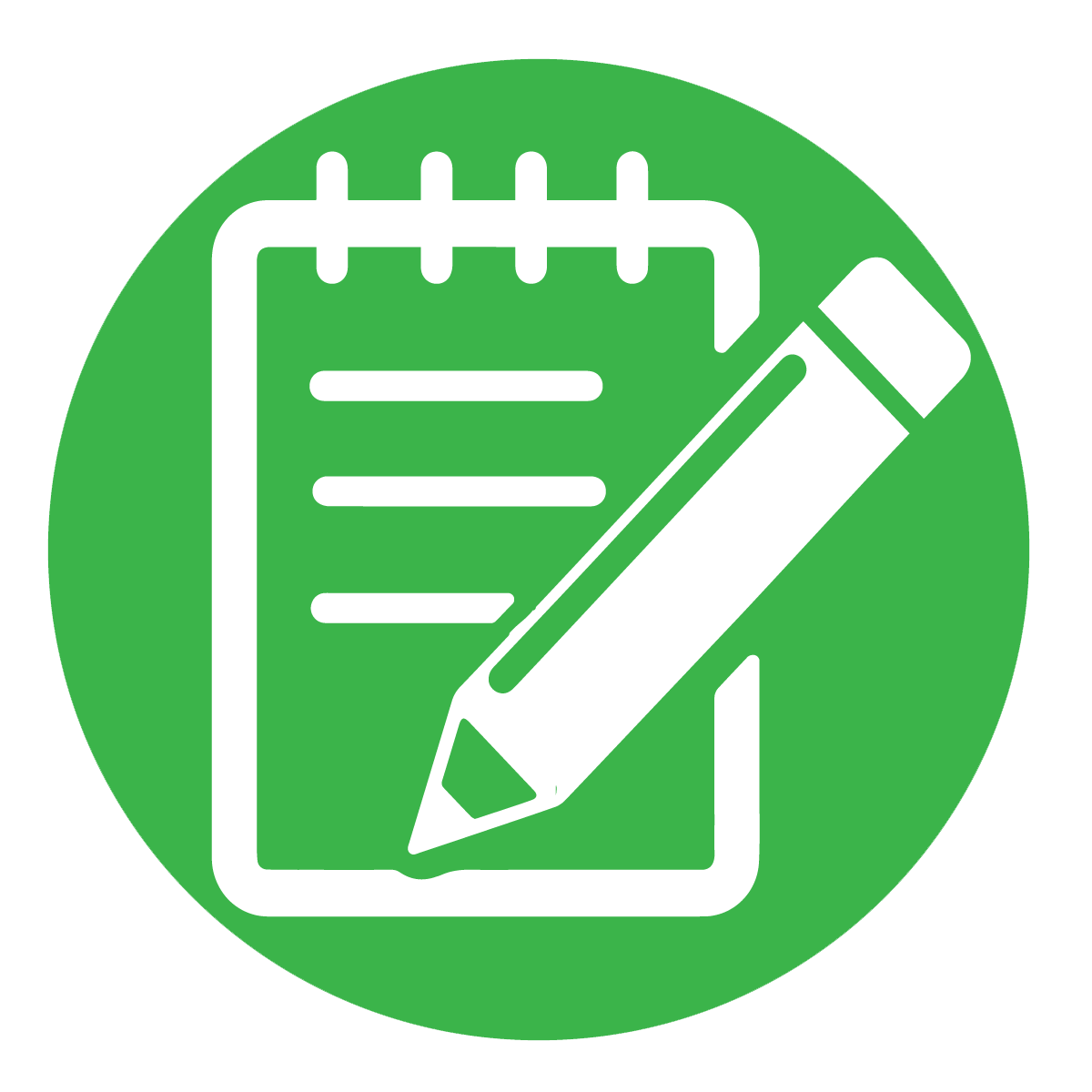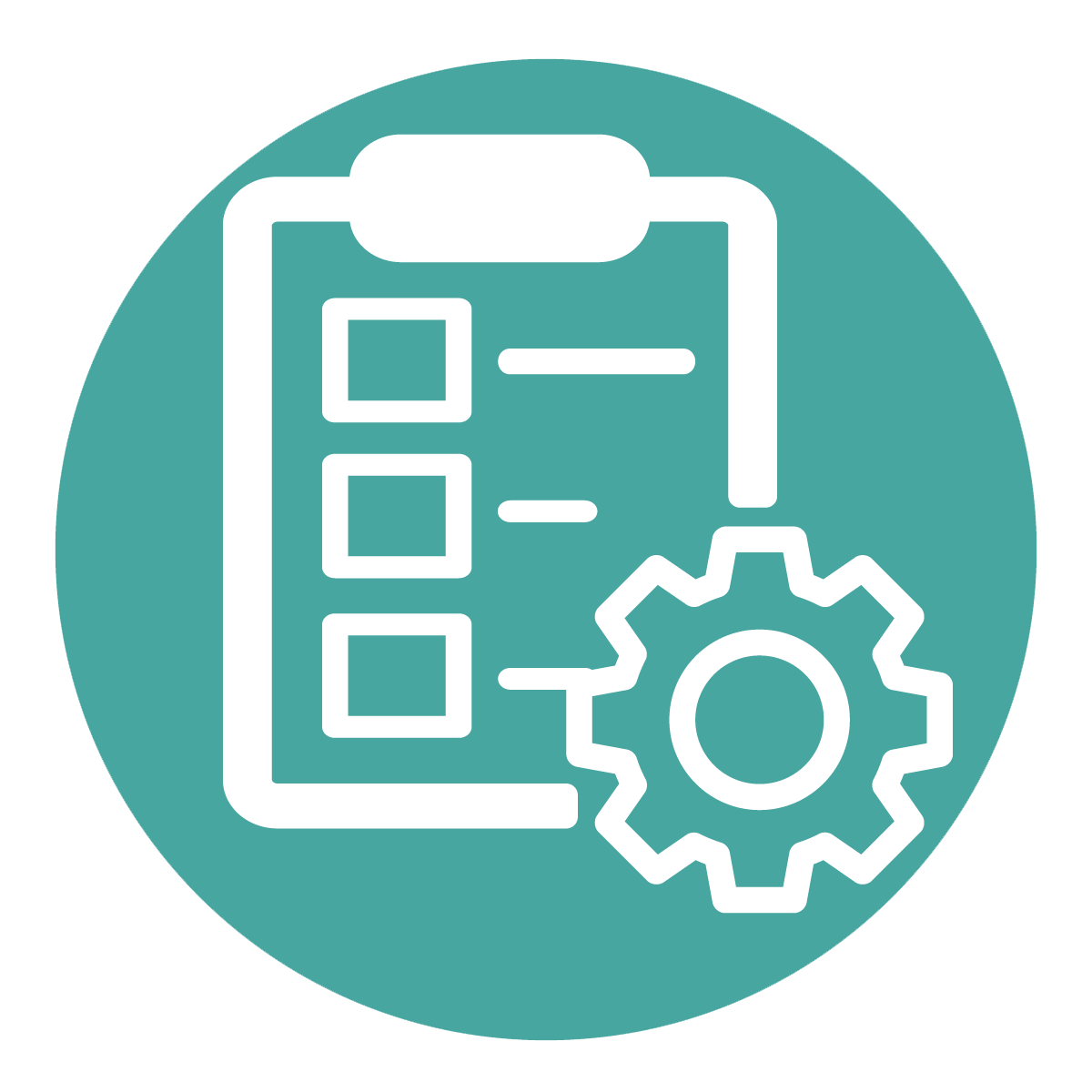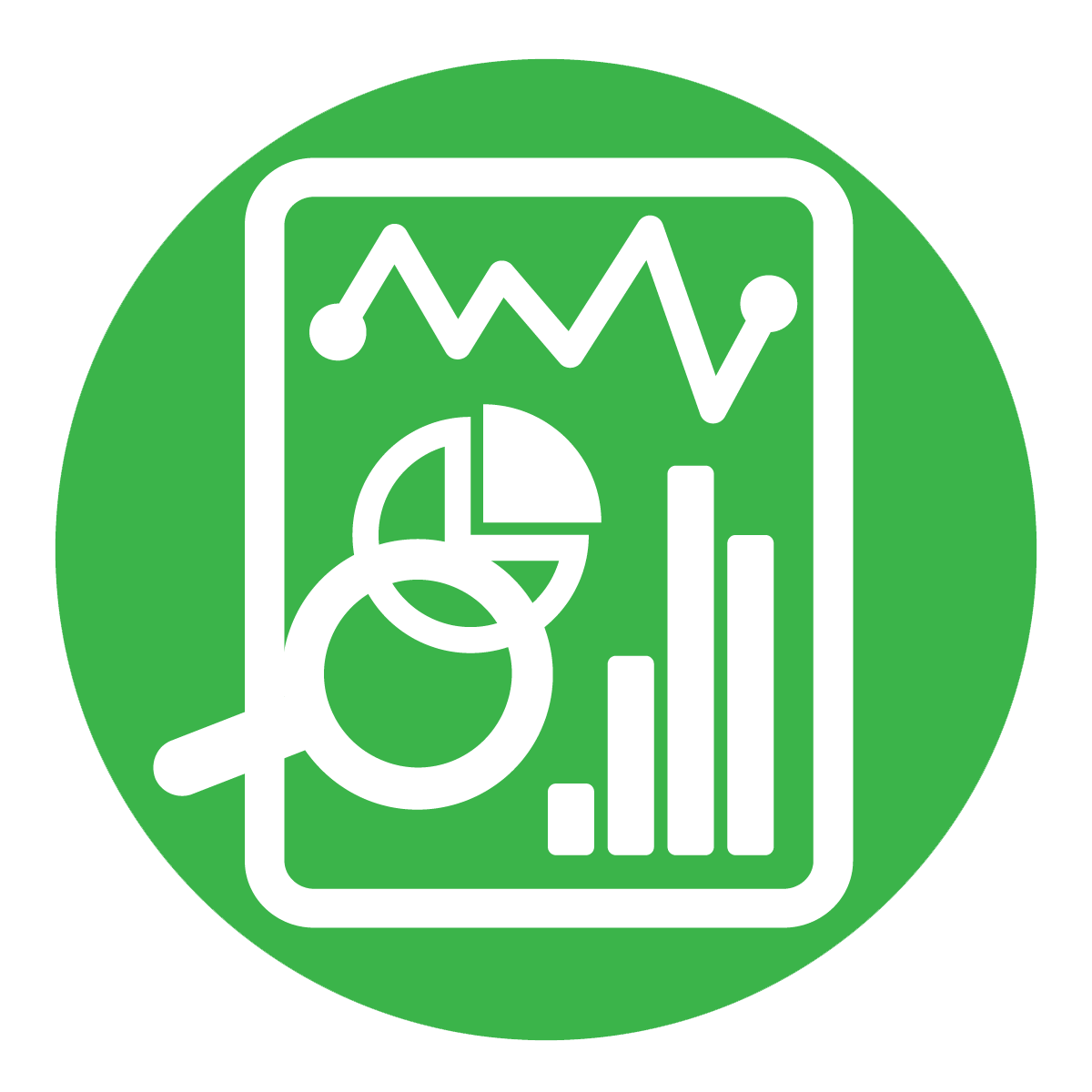Ontario’s water quantity management program
Learn about how we are protecting water resources in Ontario through an enhanced water taking program.
Decision: Enhancements to Ontario’s water taking program
We are moving forward with enhancements to Ontario’s water taking program. Learn more about the changes we’ve made to better protect water resources in Ontario.
Water resources
When we turn on our kitchen tap or wash our clothes, water is coming from one of two main sources: surface water or groundwater.
Surface water
Surface water is water that comes from lakes, rivers, streams and ponds.
Ontario has more than 250,000 lakes, including the Great Lakes. Together, they contain about one fifth of the world’s fresh surface water.
The Great Lakes provide drinking water to more than 70% of Ontarians and their watersheds are home to more than 30,000 species of fish, birds and other living things.
A watershed is an area of land that catches water runoff from rain and snow and drains or collects into a common point such as a marsh, stream, river, lake or groundwater.
Homes, farms, cottages, forests, small towns, big cities and more exist within watersheds and they can cross municipal, provincial and international borders.

Groundwater
Groundwater is found below the earth’s surface. We tap into this water through wells.
Over 2.5 million people in Ontario get their drinking water from groundwater.
Groundwater also helps to keep our rivers flowing when rainfall is low and supports Great Lakes water levels and aquatic ecosystem health.
Up to 70% of the water flowing into rivers and streams and 40% of the water flowing into the Great Lakes basin start as groundwater.
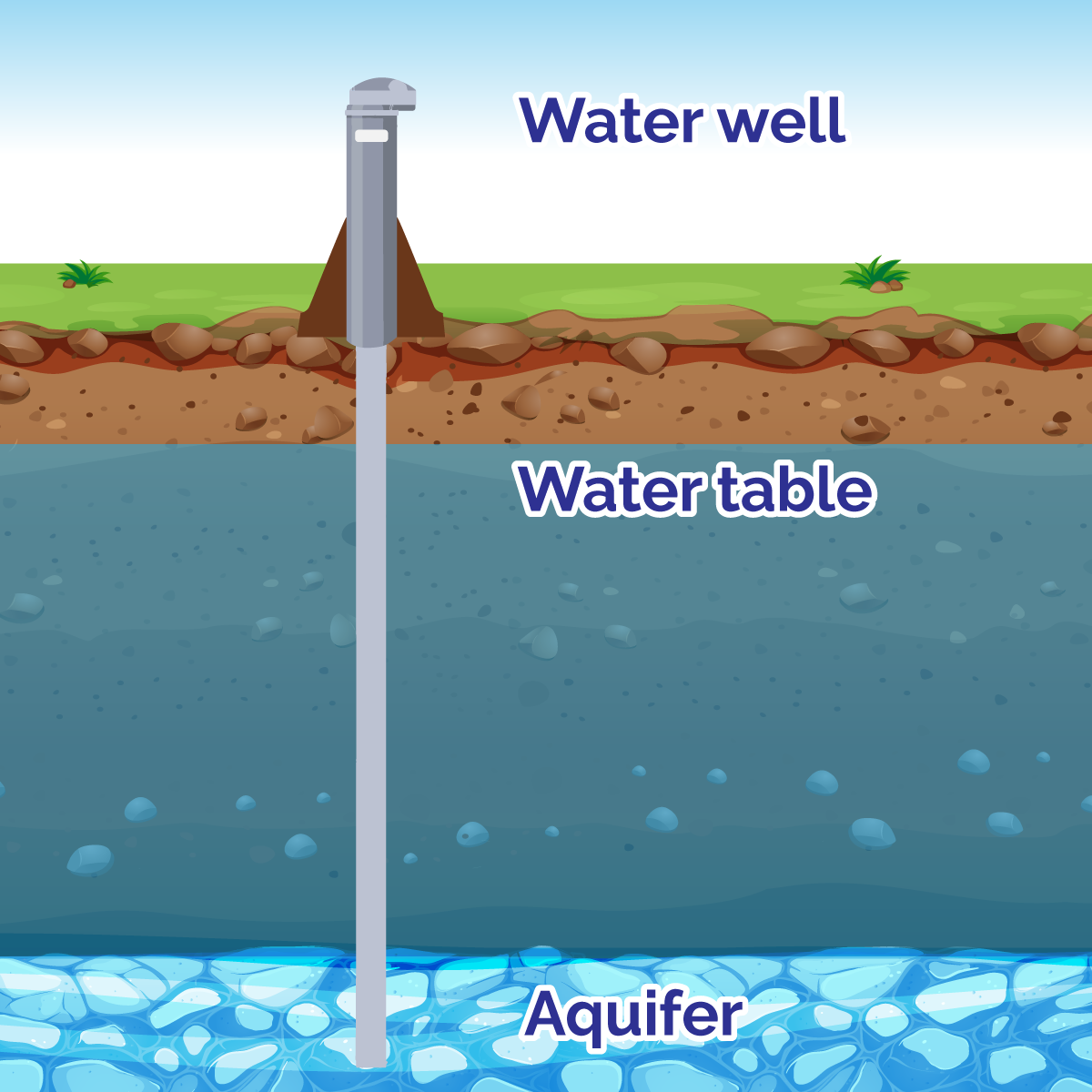
Although Ontario has an abundance of water resources, occasional drought and seasonal water shortages can occur in some local watersheds and areas of the province where groundwater supplies are naturally limited.
How water in Ontario is used
Water is used for many purposes in Ontario, such as:
- drinking water
- farming
- wetland conservation
- firefighting
- construction
- manufacturing
- mining
To make sure water is safeguarded and shared fairly among all water users, Ontario manages water taken from lakes, rivers, streams, ponds and groundwater through the Ontario Water Resources Act and the Water Taking and Transfer Regulation.
Permit to take water program
In Ontario, you must have a permit if you plan to take more than 50,000 litres of water from the environment on any day.
Commercial, industrial, agricultural and municipal users, among others, must follow this strict process in order to take water through our permit to take water program.
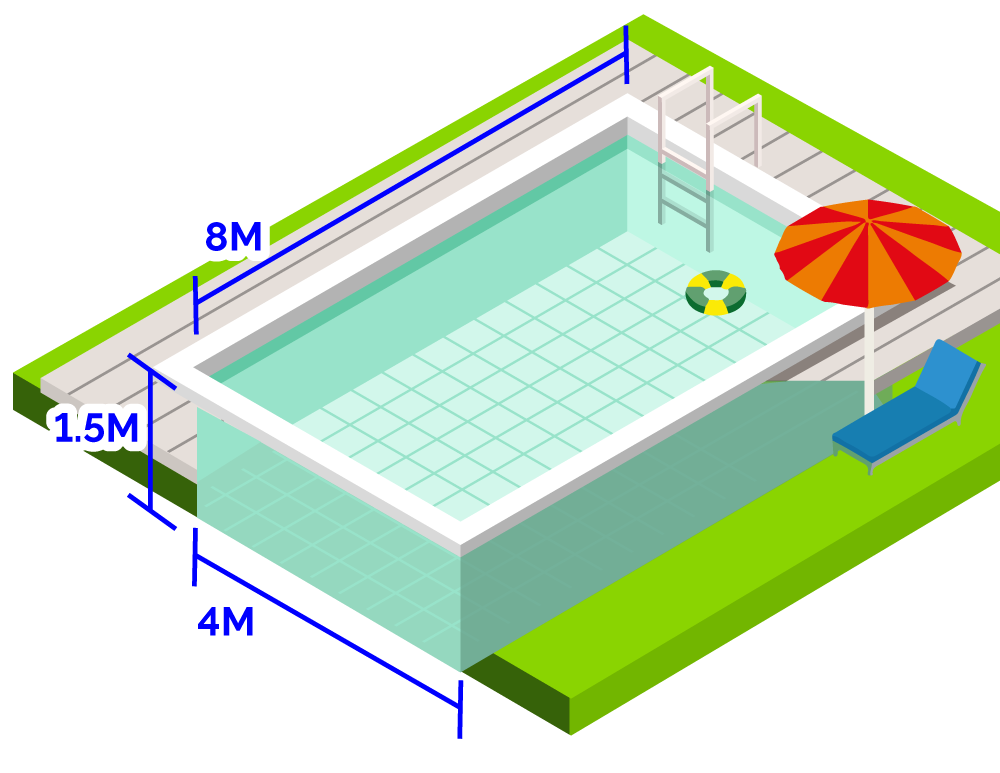
Permits to take water application process
Step 1 - Apply
Applicant completes and submits their application and any required technical studies to the ministry and any required documentation.
Step 2 - Notify and engage
Ministry reviews the application and, if required, notifies Indigenous communities, municipalities and conservation authorities, and posts the application to the Environmental Registry for public input.
Step 3 – Review and verify
Ministry reviews the application for conformance with the water taking and transfer regulation and verifies the water taking location.
Step 4 – Evaluate
Ministry assesses technical and scientific information provided based on levels of risk to the environment.
Medium-risk applications require a scientific assessment and higher risk applications require detailed hydroecological and/or hydrogeological studies. Any assessments and/or studies must be completed and evaluated by qualified persons such as professional geoscientists and engineers, or individuals with specialized degrees.
Step 5 – Final review
Ministry considers the application, including ecosystem needs, water availability, intended use of the water, potential impact to other water users, source protection requirements, and all comments received.
Step 6 – Decision
Ministry makes decision about whether to issue a permit to the applicant, posts a decision notice to the Environmental Registry, if required, and notifies the applicant.
If a permit to take water is issued by the ministry, permit holders will be required to:
- collect and record the daily amount of water taken
- comply with the terms and conditions in the permit
- immediately report complaints or interference to the ministry
- report water takings each year to the ministry
In addition, under the Clean Water Act, water budgets must be conducted by source protection authorities and municipalities in established source protection areas. Water budgets assess the amount of water available in an area and identify and assess at-risk municipal drinking water systems.
Based on the findings in each water budget, we then work with conservation authorities and other local stakeholders to develop source protection plans, which Ontario has implemented across 38-watershed-based areas.
Water budgets compare the water available in the natural environment with the amount of water being used by municipal, commercial and industrial users.
In the source protection program, water budgets identified where municipal infrastructure and future climate conditions could impact municipalities’ ability to meet future water demands or where future municipal water demands could limit the amount of groundwater available for the natural environment.
Once permits to take water are issued, we conduct regular inspections to make sure water users are following the rules and to keep our water safe to protect human health and the environment.
Water takings by sector
The amount of water taken by permit holders (such as municipalities, industries and agri-businesses) and the number of actual permits are constantly changing.
While a large number of permits are granted for agriculture, aquaculture and food-related activities, the total amount of water taken is relatively small.
Percentage of water takings by sector in 2019
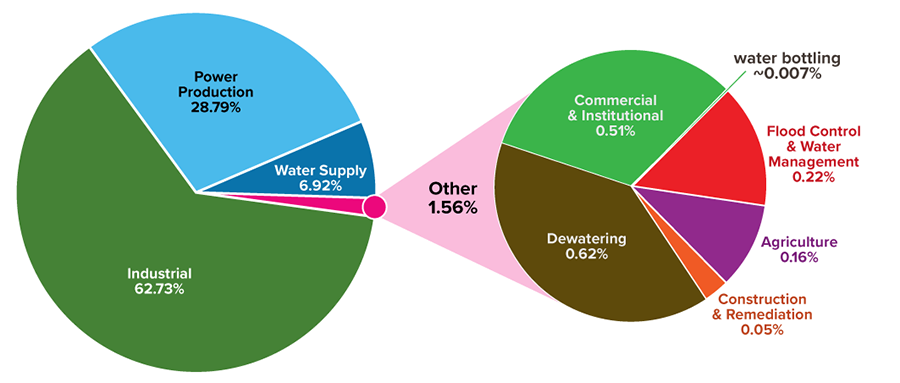
Largest water takings (left):The majority of water use by permit holders is for industrial purposes and power production (such as nuclear and natural gas power generation facilities). While large amounts of water are used in these processes, the majority of it is returned back to the water source. Water supply also uses a lot of water, but much less water than industry and power production.
Other water takings (right):When compared to industry, power production and water supply, much smaller amounts of water are taken for such uses as flood control and water management and agriculture. Commercial users may also take water to manufacture bottled water or irrigate golf courses. Dewatering activities remove water from its source, often to create dry working conditions at a construction site or quarry.
| Sector | Percentage of water taking |
|---|---|
| Industrial | 62.73% |
| Power production | 28.79% |
| Water supply | 6.92% |
| Other | 1.56% |
| Sector | Percentage of water taking |
|---|---|
| Dewatering | 0.62% |
| Commercial and institutional | 0.51% |
| Flood control and water management | 0.22% |
| Agriculture | 0.16% |
| Construction and remediation | 0.05% |
| Water bottling | 0.007% |
Did you know? Water taken from groundwater for bottling is significantly less than 1% of the permitted water takings in Ontario.
Short-term water takings for road construction and construction dewatering, for example, pose minimal risk to the environment and businesses may register themselves online on the Environmental Activity and Sector Registry (EASR). The EASR makes it faster, simpler and more cost-effective for businesses to start these low-risk water takings. The same monitoring and reporting requirements under a permit exist for registered water takings on the EASR.
Enhancements to Ontario’s water taking program
To ensure water resources are protected and used sustainably in the face of a changing climate and continued population growth, we:
- reviewed the state of water resources in key areas of Ontario
- conducted a comprehensive review of the province’s water taking policies, programs and science tools
- consulted with the public, stakeholders and Indigenous communities on enhancements to Ontario’s water taking program
On April 1, 2021, we moved forward with enhancements to the province’s water taking program as part of our Made-in-Ontario Environment Plan commitment to ensure water resources in the province are protected and used sustainably. The enhancements apply to all permitted water users (such as water bottlers) and include:
- requiring water bottling companies to have the support of their host municipalities for new or increased bottled water takings, with an exemption for small businesses
- establishing priorities of water use in the province that can guide the ministry’s decisions on how water should be shared among permitted water users when there are competing demands for water
- putting in place a new, more adaptive approach for the ministry and water users to better assess and manage multiple water takings together in areas of the province where water sustainability is a concern
- making water taking data available to the public to increase transparency around how Ontario manages water resources
Learn more about these enhancements.
An independent, third-party review validated the government’s findings that water takings for water bottling are managed sustainably in Ontario under existing legislation, regulation and guidance.
To help permit holders understand the new rules and implement the new regulatory requirements, we provided new guidance on managing water taking in areas where:
With these new rules and guidance in place, Ontarians can be confident that water resources in the province are protected by strong policies and managed sustainably under the enhanced water-taking framework.
Footnotes
- footnote[1] Back to paragraph Ministry may require additional conditions to ensure the water taken will not interfere with other water users or the environment.


